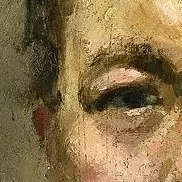First of all, major thanks to @[email protected] for this brilliant community and their tireless efforts to share beautiful art. <3
Me, I happened to spot this piece at the evil empire the other day, did some searching, and found that it hadn’t been shared here, before. Well then, well then…!
It was during his time in the western Pacific in 1944 as a combat correspondent with the United States 1st Marine Division during the invasion of the tiny island of Peleliu that Lea would really make a name for himself among the readers of LIFE. “My work there consisted of trying to keep from getting killed and trying to memorize what I saw and felt,” he says.
Lea’s vivid, realistic images of the beach landing, and Battle of Peleliu, would impact both readers and himself. The Price and That 2,000 Yard Stare would become among his most famous works. (1,794 Americans died in a two-month period in what many call the war’s most controversial battle, due to its questionable strategic value and high death toll). –WP (click there for hi-res version)
As an alt, here’s a more florid version of the color scheme that I chanced upon:



That’s an interesting point. I guess the mental trauma soldiers faced on the battlefield didn’t really gain attention before Vietnam, maybe because of the general agreement that their sacrifice was worth it no matter how terrible.
I would love to learn more about all of it. It seems PTSD was not really understood back then, with shell shock being the preferred diagnosis. But what about war zones before shelling? Were they so much less traumatizing? How was PTSD understood before the modern era, and why were we so unprepared for it following the advance of modern warfare?